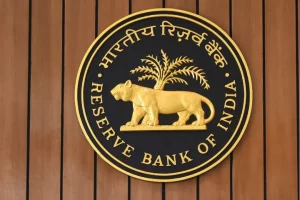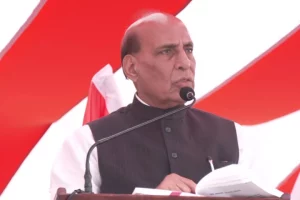
India's vibrant middle class on the driver's seat (Image Courtesy: MEA-https://indbiz.gov.in/trade/)
Barely 20 years ago, Gujarat was the only state in India that organised regular investment summits under the Vibrant Gujarat brand. A trend, started by Prime Minister Narendra Modi in 2003 as Gujarat’s chief minister, is now a norm with almost all state governments as they showcase themselves as lucrative investment destinations in a bid to grab a larger share of the booty through healthy competition.
While the Yogi Adityanath government in Uttar Pradesh held the Global Investors Summit in February, Andhra Pradesh organised its own in March. And now the Eknath Shinde government is gearing up to host the ‘Magnetic Maharashtra’ investment summit in October. West Bengal will also be holding its seventh edition of the Global Business Summit in November. Similarly, the southern state of Tamil Nadu, after initiating the first business summit in 2015, will be holding its own in January 2024.
In May this year, the Economist put out an article quoting unnamed journalists, saying that the investment summits have yielded little as the “the actual investment coming in is a fraction — usually a quarter to a third—of the announced figures.”
Nonetheless, the magazine acknowledged that the investment summits in India’s multiple states serve as a perfect platform for marketing, showcasing the thriving “competitive federalism” that the country boasts of, while giving a better understanding of ground-level picture.
Though Modi and his team have been aggressively positioning India as the next investment destination hub amid the rising global uncertainties, it is ultimately the states that need to drive investments.
“The culture and mindset of the state governments have undergone a sea change. They are now into healthy competition with each other to get a larger share of investments,” a government official told India Narrative. The official further said that investments — whether domestic or foreign will finally have to go to the states. “So, it is important that they do the needful and boost investments. Today there is healthy and much needed competition among states and that is the way forward,” he added.
Following the 1991 economic reforms, state governments have been armed with ample power to set their own business rules and frameworks which include approval time for new ventures and projects, policies on labour and land among others in a bid to attract investments.
A flurry of policy reforms by the Centre along with schemes including Make in India with a thrust on manufacturing and PM Gati Shakti– the gigantic infrastructure and logistics connecting drive has also caught the attention of the investors. “These schemes are enablers for conducive business environment, the states need to now build on them,” the official said.
S&P Global in a report pointed out that India’s potential growth over the next decade will be shaped by its diverse states and their alignment with the constitutionally mandated strong central government.
Indian states’ unique pathways to growth will influence their future reforms and development. Competition among states will also only increase as the country’s huge and expanding population of workers and consumers fuels investor interest in the country, the report added.
MNC keen on investing in India
A study jointly conducted by the Confederation of Indian Industry and audit firm EY, released late last year revealed that 71 per cent of the multinational companies that were surveyed were willing to consider investments in India for their expansion plans.
“India is seen as an emerging manufacturing hub in global value chains, as a growing consumer market and as a hub for ongoing digital transformation. In addition, in a rapidly changing geopolitical environment, India’s large and stable democracy and consistent reform measures are recognised by the MNCs,” it said.
Interestingly, a study by Japan External Trade Organisation (JETRO) too revealed that more than 72 per cent of the Japanese companies were keen to expand their operations in India. For China, the number was small at only 33.4 per cent.
According to S&P, mutual support and coordination across cities, states and the central government will be necessary if India is to fulfil its ambition of becoming a global manufacturing hub as well as realizing its goals in energy transition and agriculture. “Navigating this dynamic with deliberation and purpose will help India capitalize on the moment it is in now,” it said.
Also read: India’s growth in factory output yields ‘solid’ job creation



















